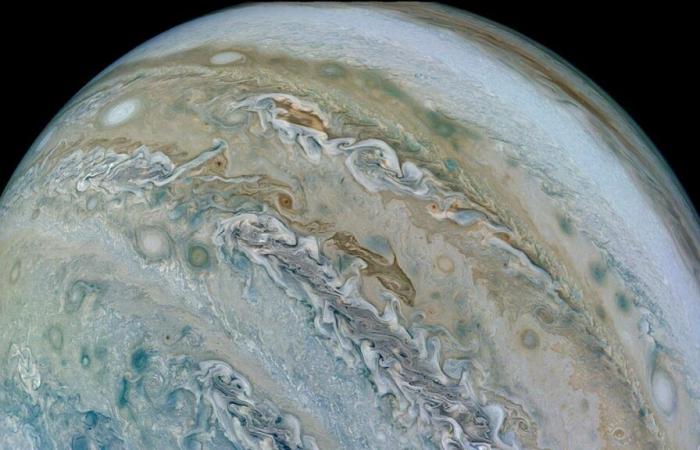Jupiter is an amazing planet. Thanks to photos from the Juno spacecraft, we are learning more about it than ever before.
The Juno probe takes a photo of a dolphin on Jupiter?
Launched in 2011, the juno probe was sent by NASA to Jupiter to study one of the most fascinating planets in our solar system. Put into orbit only in 2016, Juno's mission has already allowed scientists to make great discoveries. For the very first time, Man was able to peek under Jupiter's dense cloud cover. It may not seem like much, but this breakthrough has given us a lot of information that allows us to learn more about the formation and evolution of the planet.
As you can see, thanks to the Juno probe, scientists were able to obtain unprecedented images of the entire Jupiter system. This system includes the interior of the planet but also its atmosphere, its magnetosphere and even its moons. According to researcher Marissa Vogt in an interview with Boston University, the images obtained are “incredible” and look more like watercolor paintings than probe photos.
Among all the photos of the gaseous planet, one of them stands out for a rather funny reason. You saw it in the title of this paper, yes, it looks like a dolphin bounded along the southern temperate belt of Jupiter. Obviously, this is not a real live dolphin. This big “dolphin” is in fact a cluster of clouds, or more precisely a cluster of storms. You see in the thumbnail of this article, the dolphin is a brown spot right in the middle of the photo!
A funny dolphin that has already disappeared
With a diameter of 142,984 kilometers, Jupiter is the largest planet in the solar system, by far. For comparison, the Earth is only 40,075 km in diameter. Even funnier, Jupiter is also the most massive planet in the solar system even though it is a gas giant! Researchers believe the planet is mostly hydrogen, some helium, and traces of methane, water, ammonia, and “rock.”
Giant Jupiter's atmosphere is extremely dynamic, with massive storms and intense winds constantly. Moreover, the “dolphin” may have ceased to exist a few seconds after the photo was taken. It is still interesting to note that even complex atmospheric interactions can involuntarily create images that remind us of objects or beings that are common to us here on Earth.
This phenomenon is called pareidolia. To quote Wikipedia: “A pareidolia is the process which occurs, under the effect of visual or auditory stimuli, and which leads to recognizing a familiar shape in a landscape, a cloud, smoke, an ink stain, etc. (…) Visual pareidolia are part of optical illusions.” Basically, our brains try to put meaning into random shapes and that's perfectly normal.






